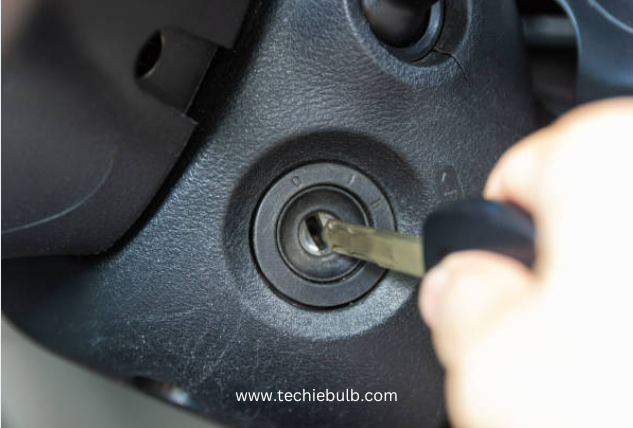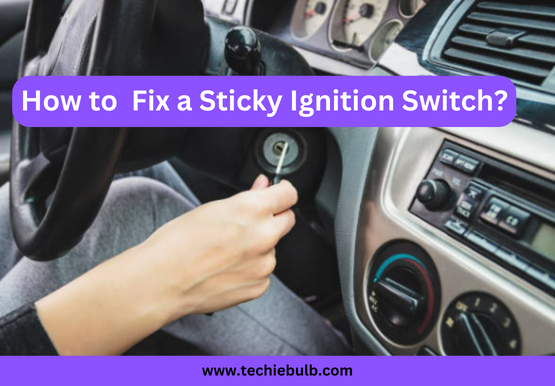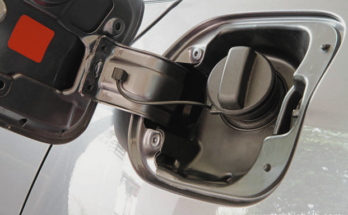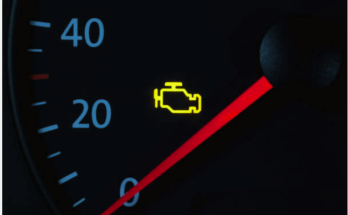Dealing with a sticky ignition switch can be frustrating, especially when you’re rushing to get somewhere. Whether it’s difficulty inserting the key, turning it, or the switch getting stuck in certain positions, this common issue can put a damper on your day. But fear not! In this blog post, we’ll explore some troubleshooting tips to help you get that ignition switch working smoothly again.
What Is a Sticky Ignition Switch?
A sticky ignition switch refers to a problem where the key becomes difficult to turn or gets stuck in the ignition cylinder, making it challenging to start the vehicle.
When the ignition switch becomes sticky, it doesn’t operate as smoothly as it should. Instead of turning effortlessly or responding promptly to start the engine, it may feel like it’s jammed or stuck in one position. This issue can arise due to various reasons such as wear and tear on internal components, the accumulation of dirt or debris, exposure to moisture, or the malfunction of certain parts within the switch.
Recognizing a sticky ignition switch is crucial because it can lead to difficulties in starting the vehicle, potentially leaving you stranded or causing inconvenience. Addressing the problem promptly through proper maintenance or seeking assistance from a qualified mechanic ensures the smooth operation of the ignition switch and the overall safety of your vehicle.
Common Symptoms of a Sticky Ignition Switch
- Difficulty turning the key in the ignition
- Key getting stuck in the ignition cylinder
- Inability to start the vehicle smoothly
Also See: What Is a Closed Coupled Catalytic Converter and What Does It Do?
How to Fix Sticky Ignition Switch?
Fixing a sticky ignition switch can be an annoying issue, but with a bit of patience and the right approach, you can often resolve it without too much trouble. Ignition switches can become sticky due to various reasons, including dirt, debris, or internal mechanical issues. Here’s a detailed guide on how to tackle this problem:

- Diagnose the Issue: Before attempting any fixes, it’s essential to diagnose the problem accurately. Is the key difficult to turn, or does it get stuck in certain positions? Does the ignition switch feel stiff or loose? Understanding the nature of the problem will help you determine the appropriate solution.
- Clean the Ignition Key: Start by inspecting the ignition key itself. Dirt, grime, and debris can accumulate on the key over time, making it difficult to insert and turn smoothly. Use a clean cloth to wipe the key thoroughly, removing any buildup. You can also use a small brush or compressed air to clean out any debris from the key’s crevices.
- Apply Lubricant: Lubricating the ignition switch can often alleviate sticky or stiff operation. Choose a lubricant specifically designed for locks and ignition switches, such as graphite or silicone-based lubricants. Apply a small amount of lubricant to the key and insert it into the ignition switch. Turn the key back and forth several times to distribute the lubricant evenly.
- Check for Obstructions: Sometimes, the culprit behind a sticky ignition switch is an obstruction within the mechanism. Take a close look at the switch and keyhole for any visible dirt, debris, or damage. Use compressed air or a small brush to gently remove any buildup that may be hindering smooth operation. Ensuring the switch is free from obstructions can make a significant difference in its performance.
- Test Different Keys: If you have multiple keys for your vehicle, try using a different key to see if the problem persists. Sometimes, a worn or damaged key can cause sticking issues. If a different key works more smoothly, it may be time to replace the problematic key.
- Consider Key Replacement: If the ignition switch continues to stick despite cleaning and lubrication, the issue may lie with the key itself. Over time, keys can wear down, leading to poor fit and operation. Consider getting a new key cut by a locksmith or the dealership to see if it resolves the problem.
- Inspect the Ignition Cylinder: If none of the above steps solve the issue, the problem may be with the ignition cylinder itself. The ignition cylinder is the component into which the key is inserted, and it contains the tumblers and pins that engage with the key to start the vehicle. Over time, the cylinder can wear out or become damaged, leading to sticking or binding. Disassembling and inspecting the ignition cylinder may be necessary to identify any issues. If you’re not comfortable doing this yourself, it’s best to seek the assistance of a professional mechanic.
- Seek Professional Help: If you’ve tried all of the above steps and the ignition switch still sticks, it’s time to seek the help of a qualified mechanic. They will have the expertise and tools to diagnose the problem accurately and perform any necessary repairs or replacements.
Also See: Limp Home Mode: Meaning, Causes and Diagnostic Explained
How much does it cost to repair a sticky ignition switch?
The cost to fix a sticky ignition switch can vary based on factors like the complexity of the issue, the vehicle’s make and model, and whether you opt for DIY solutions or professional assistance. DIY fixes, such as cleaning or lubricating the switch, may incur minimal costs, typically limited to purchasing cleaning supplies or a replacement key, which could range from a few dollars to around $50.
However, if the problem necessitates professional repairs, costs may rise. Mechanics often charge an hourly labor rate, with rates varying by location and shop, and any required parts replacement, like the ignition cylinder, would add to the expense. Replacement parts themselves can range from $50 to several hundred dollars, depending on the vehicle.
Additionally, the choice between dealership service centers and independent mechanics can impact costs, with dealerships generally having higher labor rates but potentially using more expensive OEM parts.
Overall, the cost to fix a sticky ignition switch spans from minimal expenses for DIY efforts to potentially several hundred dollars for professional repairs, and it’s wise to assess this against the convenience and functionality of a properly operating ignition switch. Consulting a mechanic for a quote can help clarify potential expenses.
Important FAQ on Sticky Ignition Switch
What causes a sticky ignition switch?
A sticky ignition switch can be caused by various factors, including wear and tear on internal components, dirt or debris buildup, exposure to moisture or liquids, or faulty components within the switch itself.
How do you know if a sticky ignition switch requires replacement rather than just cleaning or lubrication?
If you’ve tried cleaning and lubricating your ignition switch, but the sticking issue persists or worsens over time, it may be a sign that replacement is necessary. Additionally, if you notice visible damage such as worn or broken components, or if the key insertion and removal are difficult even after cleaning, it could indicate that the ignition switch needs replacement. Other signs include loose or sloppy key engagement, electrical issues like difficulty starting the vehicle or intermittent power loss, and if a professional assessment suggests that replacement is the best course of action based on the condition of the switch and the extent of the problem. If you’re uncertain, consulting a qualified mechanic or locksmith for a thorough inspection is recommended to determine if replacement is necessary for proper functionality and safety.
How do I know if my ignition switch is sticky?
You may notice difficulty or resistance when turning the key or pressing the start button to start your vehicle. The switch may feel like it’s sticking or getting stuck in one position, making it challenging to start the engine smoothly.
Can I fix a sticky ignition switch myself?
While some basic maintenance tasks like cleaning the key and switch or applying lubricant can help in some cases, repairing a sticky ignition switch typically requires the expertise of a qualified mechanic.
Is a sticky ignition switch dangerous?
While it may not be immediately hazardous, a sticky ignition switch can lead to potentially dangerous situations, such as being stranded in traffic or experiencing a loss of control over the vehicle if the switch fails while driving.
How much does it cost to repair a sticky ignition switch?
The cost of repairing a sticky ignition switch can vary depending on factors like the extent of the problem and the rates charged by the mechanic. It could range from a relatively low cost for simple maintenance to a higher cost if the switch needs to be replaced due to more significant damage.
What should I do if my ignition switch is sticky?
If you encounter a sticky ignition switch, it’s best to have it inspected and repaired by a qualified mechanic. They can diagnose the issue and recommend the appropriate repairs to ensure your vehicle starts smoothly and safely.




